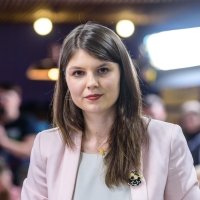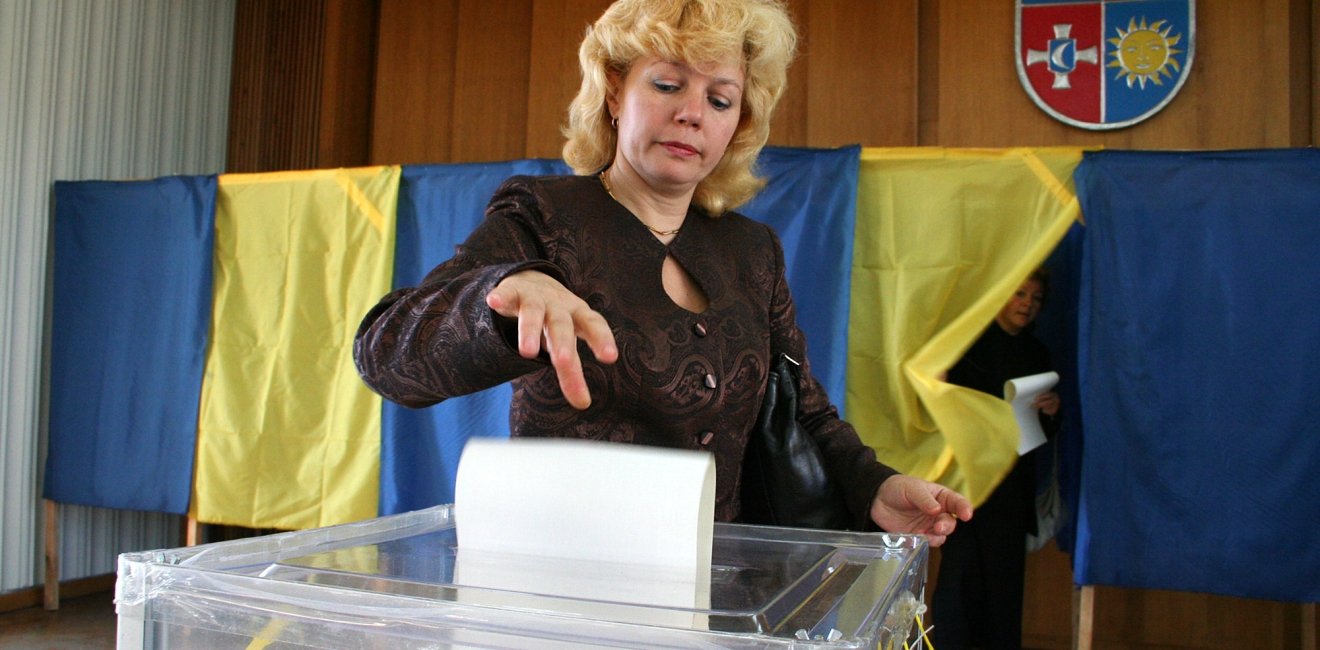
A blog of the Kennan Institute
BY KATERYNA ODARCHENKO
In contemporary Ukraine, political parties rarely survive more than one electoral cycle. The super-electoral year 2019 changed the party structure once again in Ukraine. A year later, there is already palpable interest on the part of the citizenry in new parties, as people have started losing trust in the current ones.
Pro-Government Camp
In 2019 the presidential election upset the previously existing consensus among the then political elites.
The parliamentary-presidential constitutional system of Ukraine provides the president with decisive influence only if he (or she) has a majority in the Verkhovna Rada. When Volodymyr Zelensky won the election and was inaugurated president, he still needed a majority in parliament to actually wield any power. Therefore, his team started preparing for early parliamentary elections and hectically created a party named after the TV sit-com that launched Zelensky’s political career, Servant of the People.
Members of the new party were recruited almost as if it were a competition. Deputy mandates were handed to people far removed from politics―and from any understanding of public administration. However, there were also competent, experienced people among the new faces. For example, the party chairman, Dmytro Razumkov, holder of degrees in both law and economics, was politically active before founding his own political consulting company. After becoming the Rada’s speaker he was succeeded as party chairman by the well-known political campaigner Oleksandr Kornienko. Still, the real leader of the party is President Zelensky. So far he has been able to get his way in all parliamentary decisions, even those that provoked internal party discussions.
Today the Servant of the People faction has 247 seats in the Rada, which gives it the formal ability to pass any draft laws. Only for constitutional amendments does the faction need to form a coalition with opposition parties. Thus, formally, the Rada has a so-called “mono-majority.”
However, as Realpolitik reared its head over the past eleven months, it became clear that a mono-majority does not exist. Since last fall, internal dissent has grown, and the president’s faction in parliament has often needed presidential facilitation to get bills approved as desired by the leadership. Voting patterns in parliament show that the mono-majority has fragmented into informal groups influenced by competing politicians or oligarchs. And since last winter these groups have tussled with each other, which puts the unity of the party and the faction at risk. Since spring, the presidential faction has consistently needed the support of other factions.
Opposition Forces
The opposition in the Rada elected in 2019 is more respected than the opposition in the 2014 Rada was. For example, all opposition factions are represented in the leadership of the parliamentary committees. However, the majority of votes in these committees belong to the mono-majority. And the Rada rules of order were recently changed to “speed up” voting, which limits the ability of the opposition to slow down review of the most controversial acts before parliament.
The second largest faction in the Rada and the largest opposition faction, Opposition Platform–For Life (OPFL), a surviving splinter of the Party of Regions, has forty-four seats. Yuriy Boiko, a close associate of ex-president Viktor Yanukovych, is the party's nominal chairman. However, the real leadership of the faction is shared with Viktor Medvedchuk. Medvedchuk, who was the head of the presidential administration under Leonid Kuchma, today is the owner of growing media holdings and a public friend of Russian president Vladimir Putin. Despite the negative view of Russian aggression in Ukraine’s East and the annexation of Crimea, a considerable number of Ukrainian voters support the OPFL.
The next biggest opposition force is the European Solidarity party, a surviving fragment of Poroshenko’s Bloc and Yatsenyuk’s People’s Front. Today this faction is organized around ex-president Poroshenko and consists of twenty-seven MPs. Despite the humble number of mandates, the public force of this group is quite large as a result of Poroshenko’s media holdings, his connections with some bureaucratic and intellectual groups, and his ties to some radical activist groups. While in power, President Poroshenko appointed many generals, judges, and other officials who remain in office and support their former boss.
The Fatherland party, headed by Yulia Tymoshenko, has only twenty-four mandates, but because of Tymoshenko’s activity it has somewhat greater influence outside parliament.
Finally, the Voice (Golos) party, with nineteen MPs, is on the brink of disappearing. Its leader, Svyatoslav Vakarchuk, has just announced he is leaving parliament. A year ago Vakarchuk, who made the same decision in 2007, was seen as the main competitor to Zelenskyy and the heir to Poroshenko. However, public scandals and a shift of his voters to Poroshenko’s camp forced the artist out of politics.
The opposition groups often vote with the majority on draft laws, especially when the president does not have enough votes through his own faction. For example, when the bill on lifting the moratorium on the sale of agricultural land was considered, European Solidarity added its votes and the bill was adopted. However, in the media the majority and the opposition groups engage in harsh rhetoric against each other.
Demand for New Parties
Ukrainian voters still support Volodymyr Zelensky. According to a recent poll, the president would be reelected today by 37.6 percent of decided voters. His main rivals―Petro Poroshenko (16.2 percent), Yuriy Boiko (13.2 percent), and Yulia Tymoshenko (8.7 percent)―significantly lag as choices. The parties show a similar apportionment of support: Servant of the People is supported by 28 percent of decided voters, OPLF by 17.7 percent, Poroshenko’s European Solidarity by 16.2 percent, and Tymoshenko’s Fatherland by 8 percent. However, Zelensky saw his support slip by more than five percentage points just from April to June, and his party lost more than 4 percent.
Another finding from this and previous polls is that more than 20 percent of active voters do not support any political party. They do not see people representing their interests among the current leadership or in the party structure. Also, contemporary parties continue to exhibit a lack of ideology, programs, internal dialogue among members, or regional chapters.
I interpret this growing number of voters without a preferred party as a sign of demand on the “party market.” For effective change in Ukraine, it is necessary to have strong parties that consistently bring into power active citizens and competent representatives able to solve national problems and lead Ukraine to a better future. Now that parties are moving away from the center of the ideological spectrum, mainly toward different sets of conservative values, the country needs one or more centrist parties able to hold a dialogue with their members and voters and to reunite the fragmented Ukrainian nation.
The opinions expressed in this article are those solely of the author and do not reflect the views of the Kennan Institute.
Author


Kennan Institute
The Kennan Institute is the premier US center for advanced research on Eurasia and the oldest and largest regional program at the Woodrow Wilson International Center for Scholars. The Kennan Institute is committed to improving American understanding of Russia, Ukraine, Central Asia, the South Caucasus, and the surrounding region through research and exchange. Read more

Explore More in Focus Ukraine
Browse Focus Ukraine
Talking to the Dead to Heal the Living

Ukrainian Issue in Polish Elections


